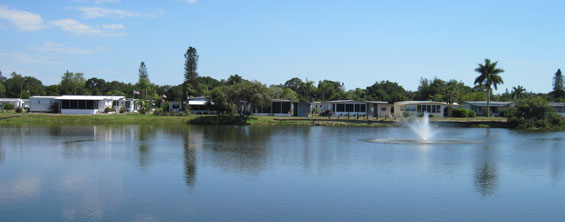Forida is known for its beautiful weather, however, it can be unpredictable and occasionally severe. While it’s crucial to know how to prepare your home for a hurricane, it’s just as important to know how to properly take care of it afterward.
What To Do After a Storm
After a storm hits, you’ll want to follow a few key steps to ensure any damage is handled properly.
Inspect Your Home for Damage
Before you start the cleanup process, it’s important to inspect your home for damage from top to bottom — we recommend doing this after every storm. If the storm was severe and has caused extensive damage, you’ll want to take extreme caution before cleaning and inspecting it.
Never walk through floodwaters and avoid and report downed power lines to authorities. Due to the risk of a gas leak, don’t use candles, lamps, or electricity when assessing the damage. If you smell gas, immediately report it and don’t return until it’s safe.
- Inspect your home’s roof from the ground. Look for shingles that are loose, damaged, lifting, or missing
- Check your gutters for any sagging, holes, dents, or leaks. It’s likely that leaves, sticks, and other debris have gotten into your gutters — be sure to check the downspouts for clogs.
- Examine your home’s ceiling and walls for water damage, leaks, stains, and cracking or peeling paint. These can be a sign of moisture in your roof cavity, which is due to roof damage.
- Inspect your home’s siding for scratches, dents, splits, cracks, holes, and other damage.
- Check your windows and doors for broken glass or damaged frames.
- Ensure your home’s skirting is intact and clear any debris that may have gathered around it during the storm.
Report Any Damage to Your Insurance Provider
While manufactured home insurance may not be required in some situations, it’s a great way to protect your dwelling and personal property against certain perils including wind, lightning, hail, and more. If you live in a flood- or hurricane-prone area, purchase additional policies to protect yourself against these natural disasters. It’s important to note that you should purchase your insurance ahead of time and regularly review your policies to stay covered.
Before the storm, record your personal belongings and your home’s condition — photos are an easy way to take inventory. Before you start the cleanup process, inspect your home and belongings to ensure that everything is there and intact. Record any missing items or damage and report it to your insurance company right away.
Clean and Repair Your Home
Clean any accumulated debris, tree limbs, and branches in a timely manner to avoid damage to your landscaping and home. Do not allow accumulated debris to stay on your roof as it can cause mold, rot, and damage. Clean your gutters and make sure they’re free of debris and clogs. Remove sandbags, door and window shutters, and any other protective materials from your home. Fill the holes from any protective coverings with exterior-grade caulk. Make sure you’re taking the necessary steps to prevent mold growth.
If you don’t feel comfortable or aren’t sure how to properly clean your home after a storm, hire a professional to help. Should your home need replacements and repairs due to storm damage, consult with your insurance company before you hire a professional.
Can a Manufactured Home Withstand Strong Storms?
You may have heard the popular myth that manufactured homes aren’t safe in Florida. On the contrary, manufactured homes are highly durable and can be just as safe as site-built homes in severe weather conditions.
This is because all manufactured homes are built according to federal building standards established by the U.S. Department of Housing and Urban Development (HUD). The HUD code establishes the standard to which all manufactured homes must be built. It regulates the design, construction, and installation of manufactured homes to guarantee their safety and quality. In fact, manufacturers are prohibited from offering homes that don’t meet HUD guidelines.
In addition to sturdy construction, manufactured homes are built with windstorm protection in mind and according to the wind zone they’re located in. This means they’re able to withstand the maximum expected wind speeds in your area (even hurricane-force winds). Look at your home’s compliance certificate to find out which wind zone your home was built for.
While manufactured homes are engineered to withstand heavy, sustained winds, you should always follow all state and federal safety guidelines and evacuation ordinances.
Jacobsen Homes Builds High-Quality, Durable Manufactured Homes
At Jacobsen Homes, our manufactured, modular, and mobile homes are built with precision, care, and dedication to quality. As a HUD-certified manufactured home provider, all of our homes are HUD labeled to verify that they’ve been designed, tested, and constructed to not only meet but exceed federal standards to guarantee your safety.
Contact us today or schedule a tour to get started building your dream home in Florida.

